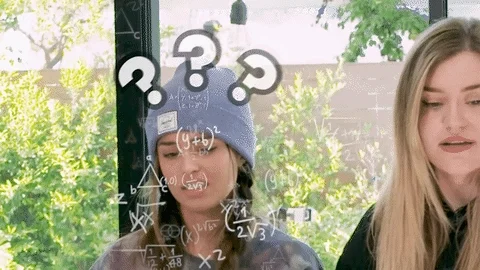
singers Ed Sheeran, Cher, and Robbie Williams
actors Keira Knightly, Orlando Bloom, and Mary-Kay Olsen
inventors Albert Einstein and Benjamin Franklin
What do they all have in common?
A disability in learning math called "dyscalculia" (pronounced dis-kal-KYOO-lee-uh).
What is dyscalculia?

While many people have problems with or dislike math, dyscalculia is more than that. It's a learning disability that affects how someone is able to process and use numbers in a variety of situations, in ways that others from their peer group do not.
What are the signs?
People with dyscalculia have consistent challenges with:
basic math facts like multiplication tables ✖️
recognizing quantities under 10 without counting ("subitizing") 🔢
linking numbers and amounts ⛓️
mental math and problem-solving 🤔
telling time on an analog clock ⏲️
recognizing patterns and sequencing numbers 👀
money matters (e.g. counting bills, estimating) 💵
estimating distances and times of arrival 📐
stating which of two numbers is larger 🗣️
They might often:
Count or calculate with their fingers, even for simple calculations 🖐️
Avoid playing games or sports involving keeping score 🏈
forget frequently called or used numbers (phone, employee, etc.) 🤯
 Photo by Mick Haupt on Unsplash
Photo by Mick Haupt on UnsplashQuiz
You're concerned about your marks in math class and wonder if you might have dyscalculia. Which of the behaviors below might be evidence of dyscalculia? Select all that apply:
How do I get a diagnosis?
Teachers and parents may be some of the first to notice the signs of dyscalculia. But it should be diagnosed by a professional like a psychiatrist or neuropsychologist.
If you think you might have dyscalculia:
1. Talk to your math teacher and ask them to make note of your areas of trouble.
Visit a doctor to rule out any medical issues that might be impacting your learning like vision or hearing impairment, or brain injury. They can also refer you to a psychiatrist or neuropsychologist for assessment.
 Photo by Hadija Saidi on Unsplash
Photo by Hadija Saidi on UnsplashTake Action
 Photo by Jeswin Thomas on Unsplash
Photo by Jeswin Thomas on UnsplashIf you suspect you might have dyscalculia:
Your feedback matters to us.
This Byte helped me better understand the topic.
